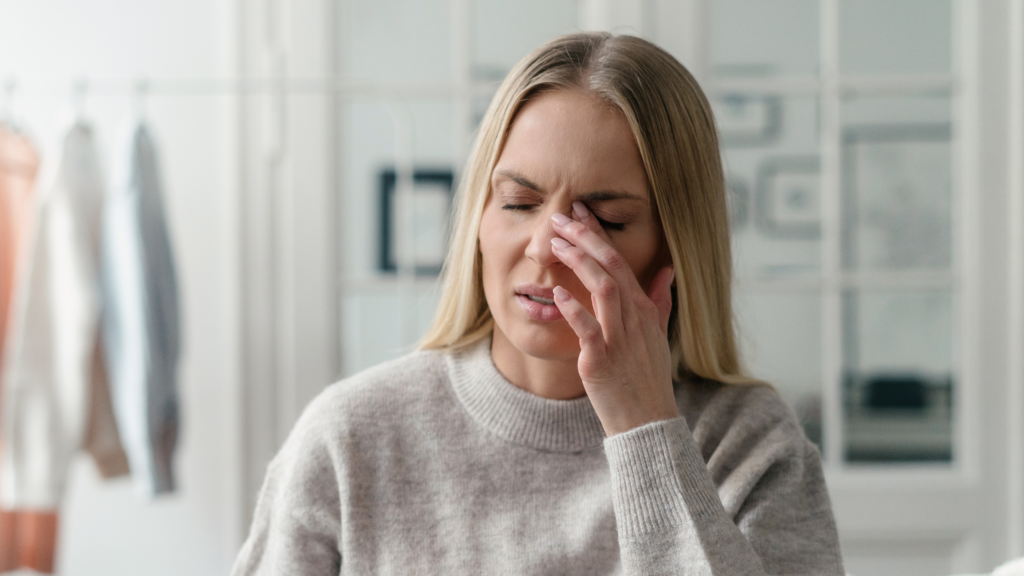Intense Pulsed Light (IPL) Treatment
Intense Pulsed Light Treatment is a technology that has been used for many years by dermatologists to treat skin conditions like rosacea and sunspots. IPL helps to blanch abnormal blood vessels in rosacea and fades sunspots by utilizing filters that only allow certain wavelengths of light to penetrate the skin and target hemoglobin and melanin. In ocular rosacea and blepharitis, there are abnormal blood vessels along the eyelid margin that produce inflammation in the meibomian glands. These glands play an important role in maintaining the oil layer in tears. Without a healthy oil layer, tears evaporate more quickly which can exacerbate dry eyes. IPL treats the underlying cause of meibomian gland dysfunction (MGD) and dry eye syndrome (DES), providing long lasting results for dry eye patients.
Dry eye syndrome is a common condition that results from insufficient tear quantity or inadequate tear quality. Our tears are responsible for lubricating our eyes to keep them healthy and nourished. The tear film consists of three components: oil, water, and mucus. Each of these components is essential to maintain the quality and quantity of the tears. A problem within any of these essential components can cause an imbalance within the tear film and affect tear production, consequently leading to dry eye syndrome (DES).

Approximately 80 percent of DES cases are caused by meibomian gland dysfunction (MGD). The meibomian glands are the oil glands that line the edges of your upper and lower eyelids, at the base of your eyelashes. These glands secrete the oil (meibum) that coats the eyes and tear film, to prevent the tears from evaporating too quickly. Meibomian gland dysfunction is a common condition that occurs when the meibomian glands become blocked with thick secretions, preventing oil from flowing freely into the tear film and affecting its quality as well.
How does IPL work?
Intense pulsed light (IPL) therapy is a painless, in office treatment that effectively treats the underlying cause of DES by improving the dysfunction of the meibomian glands. During treatment, gentle pulses of light are delivered to reduce inflammation and eliminate any bacterial infection.
These pulses help to produce various effects including:
- Warming the meibomian glands to facilitate the expression and release of the oil inside
- Improving the function of the Meibomian glands
- Reducing the levels of inflammation that contribute to dry eye by inducing clotting of the abnormal blood vessels
- Reducing tear osmolarity, helping to control the inflammation of the ocular surface, which is one of the key factors in dry eye pathogenesis
- Reducing the load of Demodex mites that stimulate secondary inflammation
- Improving cellular functions such as collagen synthesis, fibroblasts regeneration, and motility in immunoregulatory cells
- Helping to repair the nerves that encourage healthy cells to grow
This specialized treatment stimulates the natural flow of oil into the tears, stabilizes the tear film and improves dry eye symptoms.
Most patients will notice an improvement in their dry eye symptoms following their first or second IPL treatment. However, it is recommended to return for all additional treatments planned to ensure optimal results. Typical treatment plans include 4 initial treatments over the course of 8 weeks.
For severe DES, additional treatments may be recommended to maintain healthy meibomian gland function and prevent the condition from recurring. IPL therapy is often used in combination with other dry eye treatments for even greater success and dry eye relief.
Low Level Light Therapy (LLLT)
Low Level Light Therapy (LLLT) is a non-invasive therapy that uses low-level red light energy and heat to help stimulate tear production and improve the health of the cells lining the inside of the eyelids. LLLT has been shown to be an effective treatment for dry eye, providing long-lasting relief for many patients, as it effectively treats meibomian gland dysfunction and blepharitis. Based on the underlying condition, our optometrist may recommend LLLT treatments in conjunction with IPL to get the best results.
How does LLLT work?
LLLT is a gentle, non-invasive, and stress-free treatment for meibomian gland and dry eye conditions, suitable for all patients, regardless of skin type. LLLT is gel-free and treats both upper and lower eyelids simultaneously through direct and indirect Photobiomodulation.
LLLT treatments help produce various effects including:
- Improves tear film stability and increases moisture on the ocular surface
- Stimulates the lacrimal glands, which are responsible for tear production
- LLLT has anti-inflammatory properties that help reduce inflammation in the ocular tissues
- LLLT stimulates cellular activity and promotes tissue repair and regeneration
- LLLT can be used with other dry eye treatments, such as IPL, artificial tears, prescription medications, or lifestyle modifications



